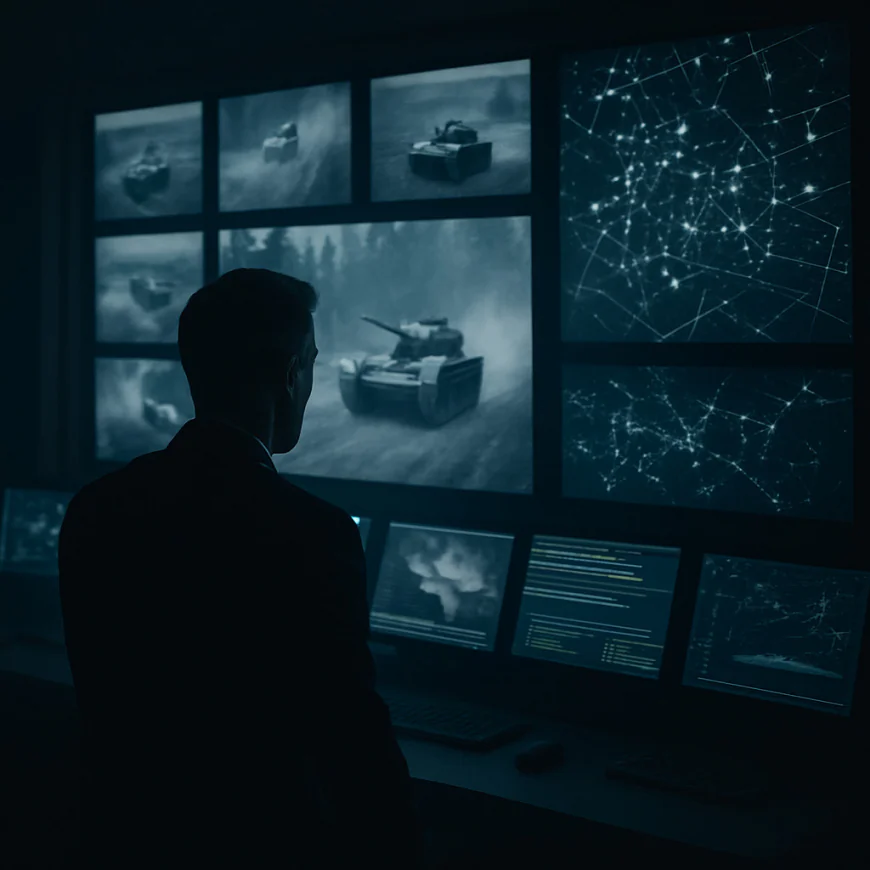The Invisible War
Discover how a hidden shift in warfare is turning truth into the new battlefield. Inside “The Invisible War,” learn why cognitive warfare is replacing bombs with belief, and how verification infrastructure like VeriEdit is becoming a national security asset.

The briefing happened in a room that doesn’t officially exist.
Sub-level 3. No clocks. No windows. No phones.
Three stars on the collar across from me. The kind of man whose decisions are discussed years later in books with redacted pages.
“We’ve evolved past kinetic warfare,” he said, sliding a folder across the table.
“Now it’s about manufacturing belief.”
Inside the folder: operations I can’t name. From regions you’ll never hear about.
And yet, what I saw in those pages could redefine everything we think we know about modern power.
We’re no longer fighting over land, or oil, or access to ports.
We’re fighting over reality itself.
Welcome to Cognitive Warfare
Traditional warfare demands scale:
→ Destroy 70% of enemy assets to achieve superiority.
→ Saturate with firepower. Disable infrastructure. Force retreat.
Cognitive warfare is asymmetrical.
→ Corrupt just 3% of the right data streams, and you can collapse an entire chain of command.
→ Distrust, not destruction, becomes the weapon.
Why bomb a communications satellite when you can make the general stop trusting the data it sends?
Why hack into a system when you can flood it with believable fiction?
The Battlefield Has Shifted
In the wars unfolding today seen and unseen truth is no longer neutral.
It’s strategic infrastructure.
And like any critical asset, it can be manipulated, misdirected, or destroyed.
Soldiers on the ground now second-guess what their drones see.
Commanders hesitate, unsure if the maps they’ve received are real or synthetic.
Entire operations stall not because of enemy fire, but because the signal has been drowned by noise.
From Market Intelligence to National Security
The man across from me tapped the folder.
“We’ve been tracking your work at VeriEdit,” he said.
“Commercial truth infrastructure. Operational truth infrastructure. Same foundation. Different stakes.”
That was the moment it hit me:
The verification systems we’re building for media, finance, and education are now being looked at by defense leaders not as software products, but as national security assets.
Because when your most critical decisions are powered by AI, what those systems believe becomes life or death.
The Next War Won’t Be Fought Over Territory
It will be fought over trust.
The side that can authenticate reality faster than the enemy can fabricate it wins.
It’s not about more weapons. It’s about better truth pipelines.
That’s what VeriEdit is building.
Not another tool to chase content.
A system to defend cognition itself across markets, militaries, and missions.
Some Battles Are Loud. Others Happen in Silence.
The invisible war is already here.
You won’t see it on the news.
You won’t hear about it in parliaments or press briefings.
But if you listen carefully
beneath the AI hype, beneath the viral headlines
you’ll hear it.
The hum of systems struggling to separate what’s real from what’s synthetic.
The war for belief is underway.
If you found this insightful, share it. If you recognize what you’re looking at - stick around. There’s more coming.


